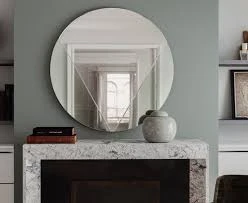

The Beauty and Significance of Decorative Glass Windows
Decorative glass windows have captivated the imagination of architects, artists, and admirers alike for centuries. They are not merely functional components of a building; they embody artistic expression, historical significance, and cultural symbolism. These exquisite windows can be found in various settings, from ancient cathedrals to modern homes, each telling a unique story through its design and color.
One of the most iconic forms of decorative glass is stained glass. Originating in medieval Europe, stained glass windows adorned the grand churches and cathedrals, such as Notre-Dame de Paris and Chartres Cathedral. These windows served not only to illuminate the interiors with vibrant colors but also to convey biblical narratives and moral lessons to the largely illiterate population of the time. The intricate designs and rich hues were more than mere decoration; they created a spiritual atmosphere, drawing the viewer's gaze upwards in admiration and reverence.
Stained glass artists employ a combination of techniques to achieve the desired effects, including painting, leading, and fusing glass. The result is a tapestry of light and color that changes with the position of the sun. As the sunlight filters through the glass, it bathes the interior in a kaleidoscope of colors, evoking different moods and enhancing the overall ambiance of the space. This interplay between light and color is what makes stained glass windows so enchanting and timeless.
In addition to churches, decorative glass windows can also be found in secular buildings. Art Nouveau, a movement that emerged in the late 19th century, saw the rise of decorative glass in homes, public buildings, and even commercial spaces. Artists like Louis Comfort Tiffany revolutionized the decorative glass industry with innovative techniques such as copper foil, which allowed for more intricate designs and greater versatility. Tiffany lamps, with their stunning glass shades, remain a symbol of this art form's elegance and craftsmanship.

Modern architecture has also embraced decorative glass, incorporating it into contemporary designs. Architects use large glass panels to create a seamless connection between the indoors and outdoors. These installations often feature abstract patterns or colored glass, which serve both aesthetic and functional purposes. In this way, decorative glass windows contribute to energy efficiency by controlling natural light and reducing glare, while still enhancing a building's overall design.
Furthermore, decorative glass windows are not limited to their exterior application. Many interior spaces, such as offices, restaurants, and homes, incorporate glass partitions that provide privacy while maintaining an open and airy feel. Frosted glass, etched designs, and colorful panels can enhance a space's diversity and style, allowing for creativity and personalization in interior design.
The cultural significance of decorative glass cannot be understated. In many cultures around the world, glass art forms an integral part of their heritage. For example, in Islamic architecture, intricate geometric patterns and calligraphy often adorn windows, reflecting a deep appreciation for artistry and craftsmanship. In Japan, shoji screens, made with translucent paper and wooden frames, provide privacy while allowing natural light to filter through.
Moreover, the preservation of historic decorative glass windows is essential for maintaining cultural identity and heritage. Many organizations and artisans dedicate themselves to restoring and conserving these beautiful artworks. The complex process involves careful examination to identify the types of glass, leadwork, and paint used. Such efforts not only protect the physical structure but also ensure that future generations can appreciate the craftsmanship and stories embodied in these windows.
In conclusion, decorative glass windows are much more than ornamental features; they are vibrant expressions of artistry, history, and culture. From the stunning stained glass of ancient cathedrals to contemporary designs that brighten modern spaces, these windows have the power to inspire and evoke deep emotions. As we continue to appreciate and preserve this beautiful art form, we also acknowledge the rich legacy it represents—a legacy of creativity, spirituality, and connection to the past. Whether found in a grand church, a cozy home, or a bustling café, decorative glass windows forever enrich our visual and emotional experiences.